People influence people. A trusted referral influences people more than the best broadcast message. A trusted referral is the Holy Grail of advertising.
– Mark Zuckerberg, Founder and CEO, Facebook
The goal of referral marketing is simple: To harness the power of authentic word-of-mouth to drive a steady stream of high-quality referrals to your business (and grow revenue as a result). Executing against that goal, however, is a little bit more complicated.
For referral marketing to work, you need to have a few core building blocks in place:
– A quality product that customers love: While referral marketing can generate dramatic results, it all starts with your product. If your customers are continually telling you how much they love it, they’ll probably be willing to do the same thing with their network.
– A captive, engaged audience: If your relationship with customers is mostly transactional (think: buying milk at a convenience store) and your social following is disengaged, referral marketing might not be for you. If, on the other hand, you’ve built up a captive audience of loyal customers, fans, and followers, referral marketing can be incredibly powerful. Engage and incentivize them correctly, and you’ll see a big ROI.
– A process to track, manage, and reward referrals: In order to move away from the traditional ad-hoc approach to referrals, you’ll need to implement processes that automate the repetitive nature of creating, tracking, and rewarding referral campaigns. This is the only way to make referrals a truly scalable source of revenue.
Beyond those building blocks, the core strategies that drive referral marketing aren’t rocket science. In fact, the approaches deployed by brands like Airbnb, Uber, and Google to drive incredible user growth are, for the most part, replicable.
So let’s dive into how to automate and scale referrals. Your brand can easily create a repeatable process to continuously attract new and loyal customers with these 5 simple steps:
1. IDENTIFY: Engage potential brand ambassadors and advocates
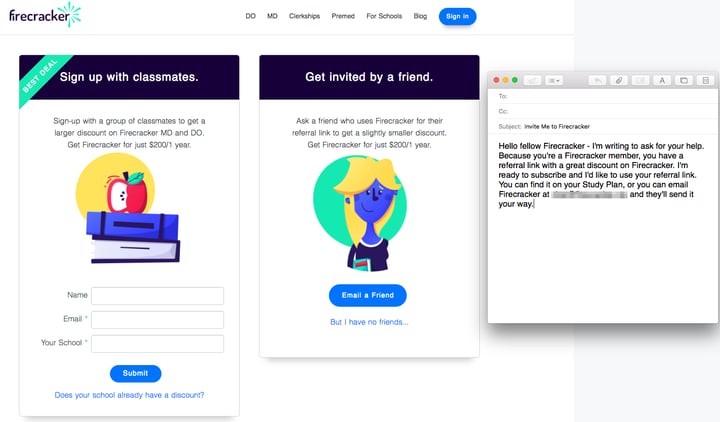
Determine the audience you want to engage and segment, starting with your existing customers, web visitors, fans, and other advocates.
2. ENROLL: Engaging contacts by enrolling them in a referral program
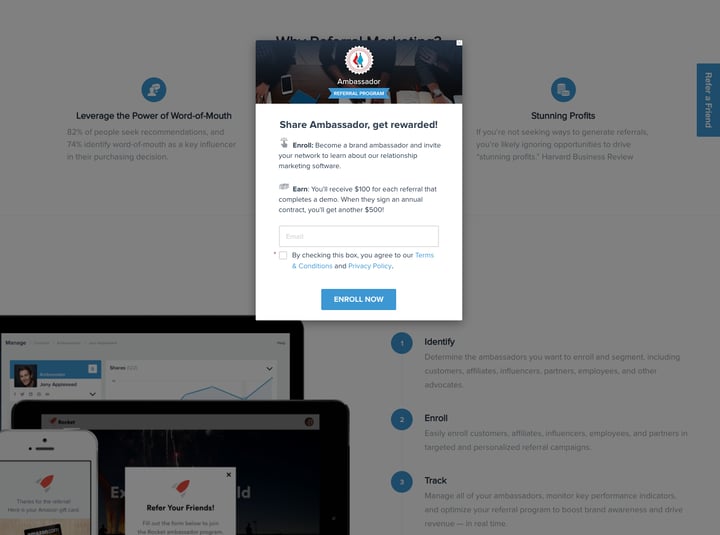
Easily enroll all your brand ambassadors in tailored referral campaigns. Take it a step further and drill down your database by segmenting according to specific criteria.
3. TRACK: Custom Links & Codes All for Cross-Device Tracking
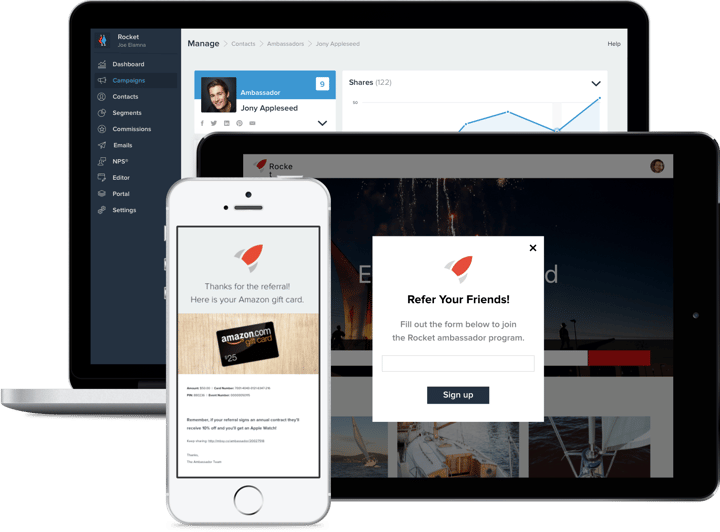
Measure and monitor important activities like shares, clicks, referral conversions, and rewards earned and paid out.
4. REWARD: Incentivizing and rewarding ambassadors for referring new customers
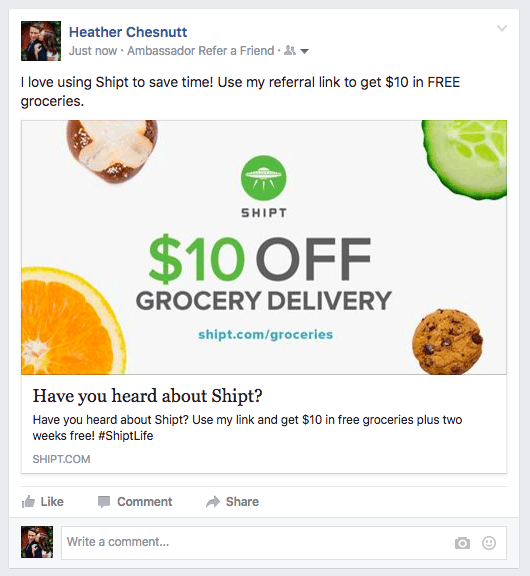
Incentivize referrals by offering relevant incentives for your ambassadors, and automating the reward process using cash, credits, or gift cards.
5. OPTIMIZE: Always be improving your program.
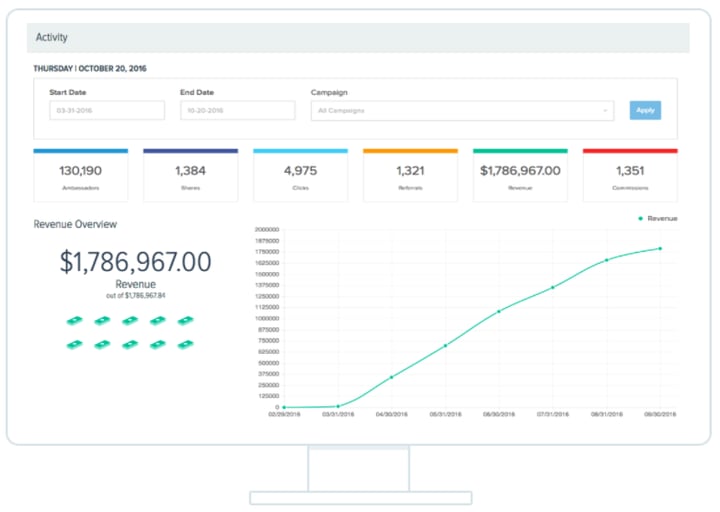
Manage all of your ambassadors, monitor key performance indicators, and optimize your referral program to boost brand awareness and drive revenue — in real time.
While referrals do happen organically, they’re never a given — even if a customer loves your products and services. In fact, a Texas Tech University study found that while 83% of customers say they’re willing to provide referrals after a positive brand experience, only 29% actually do. That chasm exists for many reasons, but it’s often exacerbated by a failure to prioritize and manage a truly scalable referral marketing program.
How can your company close that gap?
Watch our recent webinar with DigitalMarketer, which explores the basics of referral marketing, the techniques you can use to transform happy customers into revenue-driving brand ambassadors, and the simple steps you can take to ensure your referral program is easy to manage, measure, and scale.